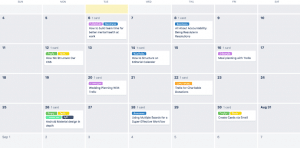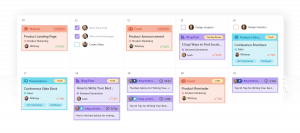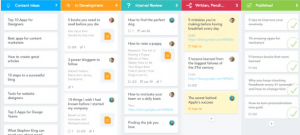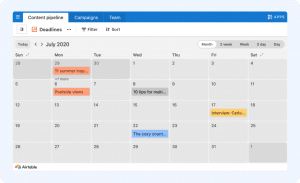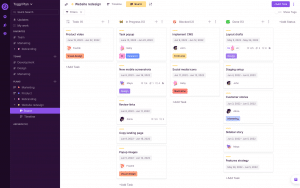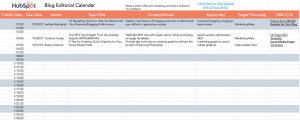How to Create an Effective Content Calendar
Create a fool-proof content strategy to boost your site’s traffic

This article contains affiliate links that will allow us to earn commissions without any extra cost to you. Read our full disclosure here.
If you’re a content writer, content manager, or e-commerce business owner, you know that having a content calendar is crucial to ensure a successful content marketing strategy. A content calendar is a tool that helps plan, organize, and schedule content creation and publication.
It provides a structure for your content marketing efforts and allows you to stay consistent and relevant with your audience.
In this article, we will discuss the importance of having a content calendar, the tools you can use it to create one, the factors you should consider when creating it, and examples of content calendars.
Why a Content Calendar Is Important
A content calendar is an essential tool for any business that wants to stay organized and consistent with its content marketing efforts. By planning out your content in advance, you can ensure that you're producing high-quality content that aligns with your business goals and resonates with your audience.
Here are some of the key benefits of using a content calendar:
- Improved Organization. A content calendar allows you to plan out your content in advance, so you're not scrambling to come up with ideas at the last minute. This can help you stay organized and reduce stress.
- Consistency. By creating a schedule for your content, you can ensure that you're consistently publishing new material. This can help you build momentum and keep your audience engaged.
- Increased Efficiency. You can batch content creation, optimize publishing schedules, and automate social media promotion.
- Better Content. producing high-quality content consistently helps you build trust and authority with your audience over time.
How to Create a Content Calendar
Creating a content calendar doesn't have to be complicated. With the right approach, you can create a comprehensive plan for your content in just a few steps. Here's how to get started:
- Identify Your Target Audience. The first step in creating a content calendar is to identify your target audience. Who are you creating content for? What are their interests and needs? How do they usually speak? Creating content using their tone and terms help you create a better connection with your audience..
- Set Your Content Goals. What are your content marketing goals? Do you want to increase website traffic, generate leads, or boost social media engagement? How many articles do you want to publish every month?
- Choose Your Content Formats. What types of content do you want to produce? Will you create blog posts, videos, infographics, or something else? Choose formats that align with your audience's preferences and your business goals.
- Plan Your Content Topics. Once you've identified your target audience, content goals, and formats, it's time to plan out your content topics. Use keyword research tools like Semrush and Ahrefs and other resources to identify topics that your audience is interested in and that align with your business goals.
- Create Your Content Calendar. With your topics in hand, it's time to create your content calendar. Use a spreadsheet or a dedicated content calendar tool to organize your content by format, topic, and publishing date. Make sure to include social media promotion and other relevant details.
Tools for Creating a Content Calendar
There are several tools you can use to create and maintain your content calendar. Here are some of the most popular ones:
Trello
Trello is a project management tool that allows you to create boards for different projects, including your content calendar. You can create cards for each piece of content and move them between columns to indicate their status (planned, in progress, published).
CoSchedule
CoSchedule is a content marketing tool that includes a content calendar feature. It allows you to create a calendar with drag-and-drop functionality, schedule social media posts, and collaborate with team members.
Asana
Asana is a project management tool that can be used to create a project for your content calendar and use tasks to indicate what content needs to be created, when it needs to be published, and who is responsible for it.
Airtable
Airtable is a cloud-based database tool that can be used for a variety of purposes, including creating a content calendar. It allows you to create customizable tables and views, so you can create a content calendar that meets your specific needs. You can add tasks, assign team members, and track progress all in one place.
Toggl Plan
Toggl Plan is a project management tool that includes a content calendar feature. It allows you to create tasks, assign team members, set due dates, and track progress. It also includes a visual timeline view, which makes it easy to see how your content is coming together over time.
HubSpot
HubSpot is an all-in-one marketing platform that includes a content calendar tool. You can use it to plan and schedule blog posts, social media posts, and other types of content. It also offers analytics and reporting features.
Conclusion
Creating and using a content calendar is crucial for any business that wants to stay organized and consistent with its content marketing efforts. By following the steps outlined in this article, you can create a comprehensive content plan that aligns with your audience's interests and your business goals. Don't forget to regularly update and adjust your content calendar based on your audience's feedback and changing trends in your industry.
